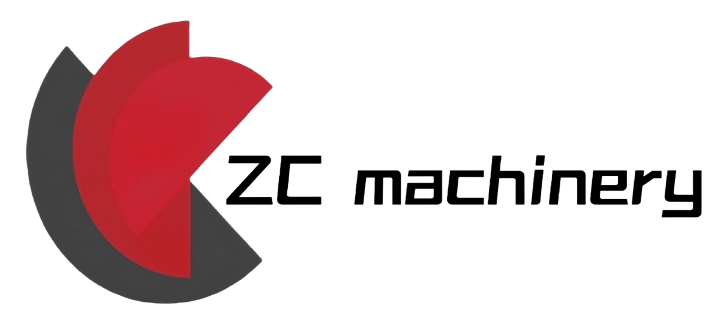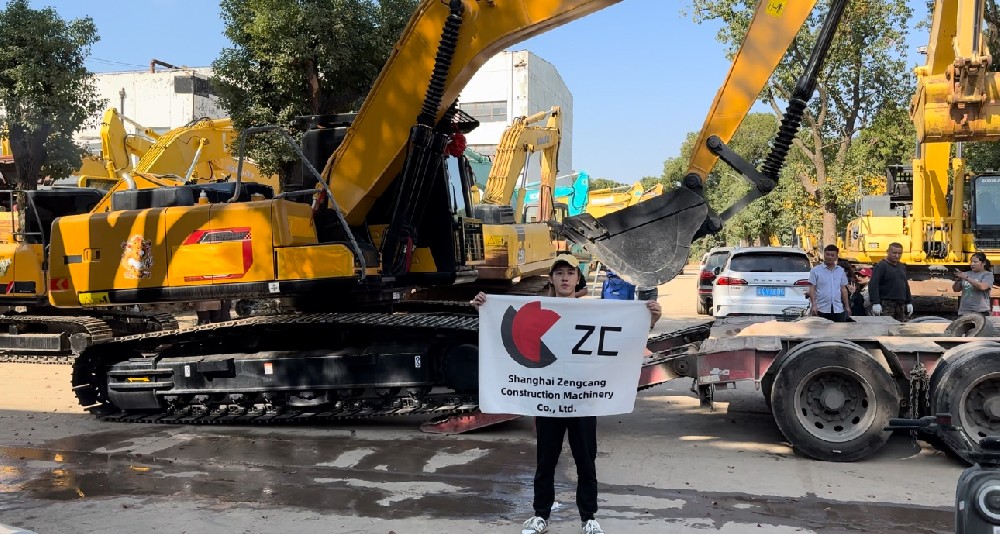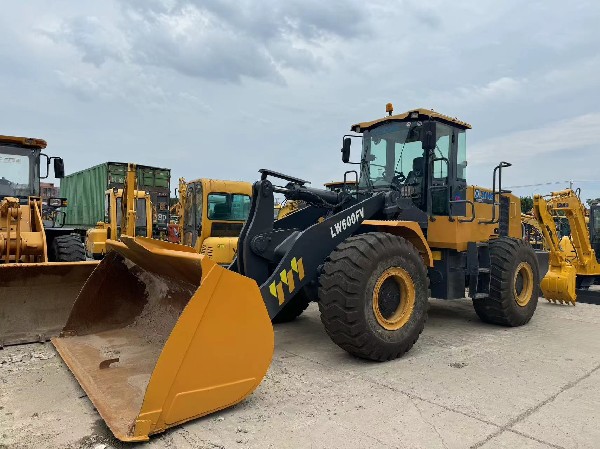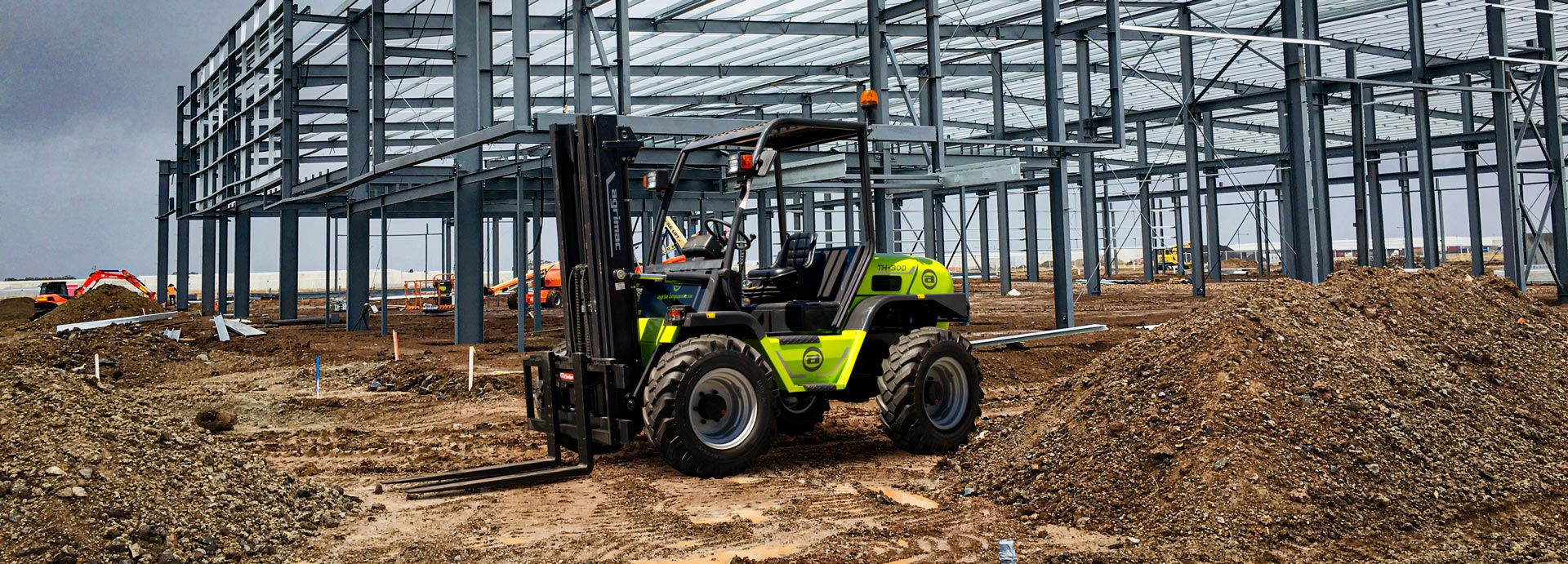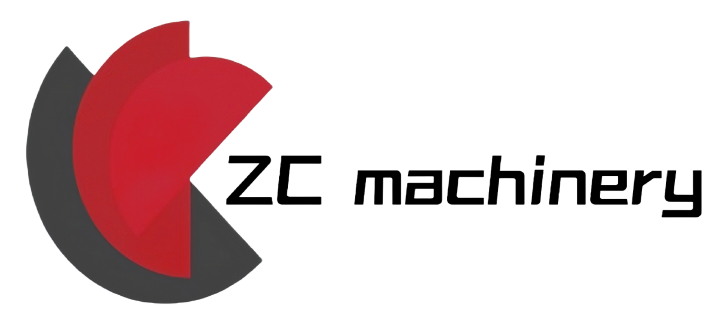Choosing a used wheel loader from China requires careful consideration to ensure you're making a sound investment.
Here are the steps to guide you through the process:
Define Your Requirements
Job Requirements:
Type of Work: Identify the specific tasks you need the wheel loader for. This could include material handling, loading trucks, digging, grading, or other construction tasks. Understanding the primary use will help you determine the necessary features and specifications.
Work Environment: Consider the conditions in which the wheel loader will be used. For example, will it be operating on rough terrain, in confined spaces, or in areas with extreme weather conditions? This will influence the type of tires, the need for additional attachments, and other features.
Workload and Frequency: Assess how often the wheel loader will be used and the typical workload. This will help you determine the durability and reliability requirements of the machine. A wheel loader used for heavy-duty, continuous operations needs to be more robust than one used occasionally for lighter tasks like grain loading.
Loader Specifications:
Bucket Capacity: Determine the size of the bucket needed for your operations. Bucket capacity is typically measured in cubic yards or cubic meters and affects how much material can be moved in a single load. Choose a bucket size that matches your material handling needs.
Lift Height and Reach: Consider the maximum lift height and reach required for your tasks. This is especially important if the wheel loader needs to load materials into high-sided trucks or containers or if it needs to reach specific heights for stacking materials.
Engine Power: Evaluate the engine power required for your operations. Engine power, measured in horsepower (HP), affects the machine's ability to handle heavy loads and perform demanding tasks. Ensure the engine power is sufficient for the terrain and workload.
Operating Weight: The operating weight of the wheel loader can impact its stability and maneuverability. Choose a machine with an appropriate weight for the tasks and conditions in which it will be used.
Attachments and Features: Identify any additional attachments or features needed for your operations. Common attachments include forks, grapples, and snow plows. Features such as quick-attach systems for easy changing of attachments, ride control for smoother operation, and advanced control systems can enhance productivity and ease of use. At ZC Machinery we offer customization and we can order attachments directly from suppliers, then install them for you.
Set a Budget
By comprehensively considering all these factors, you can set a realistic and thorough budget for purchasing a used wheel loader, ensuring you make an informed financial decision that aligns with your operational needs and financial constraints.
Determine Total Cost of Ownership:
Initial Purchase Price: Establish the maximum amount you are willing to spend on the initial purchase of the used wheel loader. This is the primary figure to start with, but it’s crucial to consider additional factors that contribute to the total cost of ownership.
Financing Options: Explore different financing options if you need to spread the cost over time. Options may include loans, leasing, or hire purchase agreements. Assess the interest rates, repayment terms, and overall cost implications of financing.
Factor in Additional Costs:
Inspection and Appraisal Fees: Include costs for a professional inspection and appraisal of the machine to ensure its condition and value.
Transport and Delivery: Consider the cost of transporting the wheel loader from the seller’s location to your worksite. This can vary significantly based on distance and logistics.
Insurance: Calculate the cost of insuring the wheel loader. Insurance is necessary to protect your investment against theft, damage, and liability.
Registration and Legal Fees: Include any costs associated with registering the machine, especially if it will be used on public roads, and any legal fees for transferring ownership.
Estimate Maintenance and Repair Costs:
Regular Maintenance: Budget for regular maintenance costs such as oil changes, filter replacements, tire servicing, and other routine checks. Regular maintenance is critical to keeping the machine in optimal condition.
Unexpected Repairs: Allocate a portion of your budget for unexpected repairs. Even well-maintained machines can encounter unforeseen issues that require immediate attention.
- **Parts Replacement**: Research the availability and cost of replacement parts and labour for the specific model of the wheel loader.
Balance Quality and Cost:
Quality vs. Price: Balance the desire for a high-quality, reliable machine with the constraints of your budget. Sometimes, paying a bit more for a well-maintained machine can save money in the long run by reducing downtime and repair costs.
Age and Usage: Newer machines with lower hours are typically more expensive but may offer better reliability and require less immediate maintenance. Older machines with higher hours are cheaper but may incur higher maintenance costs.
Budget Flexibility:
Contingency Fund: Set aside a contingency fund within your budget to handle any unexpected expenses that arise during the purchase and initial operation phases.
Negotiation Room: Allow for some flexibility in your budget to accommodate negotiation. Having a clear maximum budget in mind will help you negotiate more effectively with sellers.
Research Models and Brands:
- Look into various brands and models to find those known for reliability and ease of maintenance.
- Check user reviews and forums for insights on performance and common issues.
Inspect the Machine:
Start with a comprehensive visual inspection to look for signs of wear, rust, and any visible damage to the frame and body. Pay close attention to critical areas such as joints, hinges, and the undercarriage, as these can indicate how well the machine has been maintained.
For the engine and transmission, check for oil leaks by examining the ground beneath the machine and inspecting seals and gaskets. Listen for any unusual noises during operation, which could suggest internal issues. Assess the condition of belts and hoses, ensuring there are no cracks or frays.
Ensure the hydraulic systems are functioning properly by operating each hydraulic function. Check for leaks around hoses and cylinders, and make sure the hydraulic fluid levels are adequate. Examine the hydraulic oil for cleanliness, as contaminated fluid can lead to mechanical problems.
Inspect the tires for tread depth and look for signs of uneven wear, which may indicate alignment or suspension issues. Additionally, check the rims for cracks or damage.
Evaluate the cab and controls by examining the overall condition of the cab, including the seat for wear and tear. Test all control panels to ensure they operate smoothly and respond correctly.
Test Drive:
Operating the wheel loader is crucial for assessing its performance. Start by familiarizing yourself with the controls and ensuring you feel comfortable with their layout. Begin the test drive in a safe area where you can fully evaluate the machine's capabilities.
As you start the engine, pay attention to how easily it starts and listen for any unusual sounds. During the drive, monitor the engine sound for consistency; it should run smoothly without sputtering or excessive noise. Observe the responsiveness of the throttle and check for any lag in acceleration.
Test the transmission by shifting through all gears, paying attention to how smoothly the transitions occur. Any grinding or hesitation could indicate issues with the transmission.
Next, evaluate the braking system. Test both the service brake and the parking brake. The service brake should engage smoothly without pulling to one side, and the parking brake should hold the machine securely when engaged.
As you maneuver, assess the steering for responsiveness. It should be smooth and require minimal effort. Make tight turns to check for any unusual noises or feedback, which may indicate problems with the steering system.
Finally, consider the overall comfort of the cab. Assess visibility from the operator's seat, ensuring you have a clear view of the work area. Check the seat's adjustability and support to ensure you can operate comfortably during long tasks.
Consider Professional Inspection: If you're unsure about your assessment skills, consider hiring a qualified mechanic or technician to perform a thorough inspection.
Negotiate and Finalize the Deal:
Once you've completed your inspection and test drive, it’s time to negotiate the purchase price. Start by gathering all your findings, including any issues identified during the inspection and insights from the test drive. Use this information as leverage to negotiate a fair price that reflects the machine's true condition.
Begin the negotiation with a reasonable offer, based on your research and the mechanical report. Be prepared for counteroffers and stay calm and professional throughout the process. Highlight any repairs or maintenance the machine may need as justification for your offer.
If the seller is unable to adjust the price, consider negotiating additional benefits, such as including warranties or service agreements. Sometimes, sellers may be more flexible with terms rather than price.
Having a written contract protects both parties and helps avoid misunderstandings.
Before finalizing the deal, review the payment methods and ensure they align with your preferred options. Confirm any necessary documentation, such as the title transfer and proof of ownership, to ensure a smooth transaction.
After the paperwork is complete, double-check that the machine is in the same condition as when you inspected it before taking possession.
By following these steps, you can make a more informed decision and choose a used wheel loader that meets your needs and budget.
